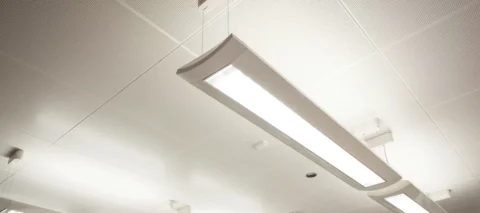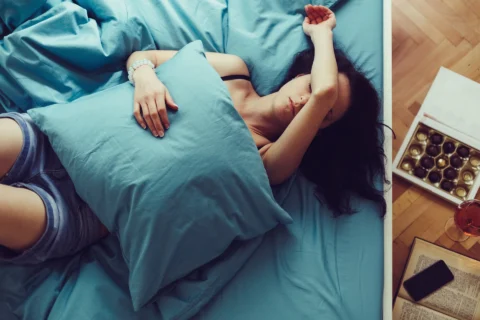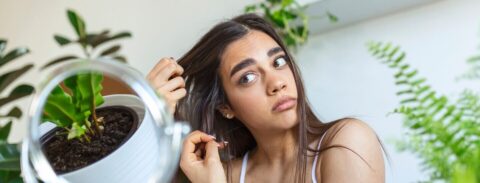Migraine is a condition that can cause a range of symptoms, including intense, pounding headaches that can be excruciating. Botox injections are usually recommended after conventional migraine treatments, such as drugs and lifestyle changes, have failed to control the pain. However, certain medications should be considered before botulinum toxin injections due to the possibility of some risk factors associated with them.
So in what ways can Botox treatment for migraines interact with other medications? There are some medications and supplements that slow down the production of platelets that prevent bleeding and bruising. Following the treatment, your platelets may be unable to reach broken capillaries and blood vessels, increasing the chances of bruising. To ensure you avoid any adverse effects from drug interactions, consult with a qualified provider regarding your condition.
Botox Interaction with Other Medications
Drug interactions can cause the Botox injection procedure to perform differently or put you at risk for dangerous adverse effects. This article does not include all potential medication interactions. Keep track of all the products you use and disclose them to your health care professional and pharmacist. Don’t begin, stop, or modify the dosage of any medications without first consulting your healthcare provider.
Medications to Avoid
Botox injections for migraine prevention in adults may cause mild to severe side effects. When Botox is used with other drugs, these side effects have the potential to be intensified. Headaches and neck pain are 2 common side effects. Swelling on the injection site, temporary blurred vision, excessive tearing from dry eyes, muscular weakness, and drooping eyebrows or eyelids are also possible side effects.
Before a Botox treatment procedure, a migraine patient must consult with a doctor or pharmacist if they are taking any of the medications listed below. Your doctor may advise you to do the following, depending on your individual circumstances:
- Remove drug combinations from your regimen,
- Switch from one drug to another,
- Change the way you take one or both of your medications, or
- Leave everything as is.
Blood Thinners
Specific medications might cause blood to thin. This tends to suggest a patient is more likely to bruise after a Botox injection procedure. Because of the increased risk of bruising, it’s recommended that you avoid using blood-thinning medications for at least 7 days before your Botox session if they weren’t prescribed by your health care professional.
However, if you’re on blood-thinning medications due to serious medical conditions including irregular heartbeat, heart stents, clotting disorders, a history of heart attacks or strokes, or any other serious conditions, don’t stop taking them and risk a little bruising. The following are a few of the most commonly prescribed blood thinners:
- Ibuprofen (Advil, Motrin)
- Aspirin
- Excedrin
- Naproxen (Aleve)
- Celecoxib (Celebrex)
- Ginseng
- Fish Oil
- Vitamin E
- Ginkgo
Muscle Relaxants
Botox injections temporarily paralyze the muscle, whether it’s the muscles that produce migraine headaches in the forehead or muscle stiffness, by disrupting nerve-muscle communication. The use of muscle relaxant medications before or after treatment with botulinum toxin can potentially amplify excessive weakness on the injection sites.
Antibiotics
Prior to the injection, a patient should discuss their health history and undergo a full examination. Antibiotics in the aminoglycoside category, such as gentamicin that are used to treat bacterial infections, can enhance the efficacy of neurotoxins. Don’t schedule for the entire duration of your antibiotics prescription to avoid risk. Worst-case scenario: you’ll have excessive weakness of the muscles, droopy eyelids, or double vision.
Antioxidants
In the week leading up to your Botox injection treatment, you should also avoid antioxidants. Antioxidants can make blood vessels more fragile while simultaneously helping to avoid blood clots. Green tea, red wine, ginger, cinnamon, and fish oil are examples of foods and beverages high in antioxidants.
What Else to Avoid After Botox Treatment of Migraine

Botox injections are a straightforward procedure that could be done repetitively without risk. The entire treatment takes roughly 10 minutes on average. A single treatment with botulinum toxin might last anywhere from 3 to 4 months. Following a Botox treatment, your activities and lifestyle can boost or decrease the effectiveness of migraine prevention.
Botox aftercare is designed to help you get the most out of your treatment plan. It can also reduce the danger of bruising on the injection sites or Botox spreading to other parts of the body. Here are a few tips for aftercare after Botox injection treatments.
Alcohol
It’s recommended that you refrain from drinking alcohol for 24 hours before and after your treatment with botulinum toxin, especially red wine. Alcohol consumption has been linked to increased bruising and dehydration. Dehydration might make recovery more difficult.
Heat and Sun Exposure
Avoid direct exposure to sunlight in the treatment areas for at least the first 4 hours following Botox. This might trigger flushing or raise blood pressure, resulting in bruising on the injection sites.
Stay out of the sun for up to 48 hours following your Botox injection session if possible, and wear sunscreen if you must go outside. Hot tubs, saunas, hot showers, and tanning beds should be avoided because they raise blood pressure and increase the risk of bruising.
Face Rubbing
Although it may be tempting, avoid rubbing or massaging the injection sites on your face. You may experience a tingling or itchy sensation on the Botox injection sites after the procedure. Following the Botox treatment, don’t rub your face for at least 24 hours.
Botox can be moved around your face by applying pressure to the treated areas, resulting in undesired effects such as drooping eyelids.
Are You A Good Candidate for Botox Treatment for Migraines?
When you get a migraine, your body releases pain-related substances called neurotransmitters and molecules. Botulinum toxin injections block the transfer of these chemicals at the intersection of neurons and muscles on the injection sites. Botox is picked up by the neurons and interferes with pain-related neurotransmission when injected into the face, head, and neck muscles.
Botulinum toxin treatments for chronic migraines have been shown to be helpful in clinical trials. Other drug combinations, as well as lifestyle adjustments, may be suggested. You may be a candidate for this treatment plan if your licensed healthcare professional examines your full health history and determines that you suffer from chronic migraines.
Who Can Have Botox Treatment to Prevent Migraines?
Botox has been approved by the FDA for chronic migraines in individuals who experience at least 15 headache days per month and each headache lasts 4 hours or more. At least 31 injections are administered across and around the injection sites on the head and shoulders as part of the session.
Treatments are repeated every 3 months, and after the first 2 sessions, most patients notice a decrease in migraine headache days. Because they use the same botulinum toxin for aesthetic Botox injection procedures, adverse effects such as muscular weakness are possible. Botox, on the other hand, is typically a well-tolerated migraine treatment option.
When Should You Consider Botox for Migraine Treatment?
Botox injections aren’t a first-line treatment plan for chronic migraines and should only be tried if other options have failed. This medication isn’t recommended for people who have less than 15 migraine attacks per month. Even though they are generally safe and well-tolerated, various disorders and diseases may make their use unsuitable or require more monitoring and medical attention.
Before you go to the treatment center, make sure you’re eligible for Botox injections. If you’re breastfeeding, pregnant, or have been diagnosed with nerve disorders, you can’t get Botox injections. An allergic reaction to Botox may also present some risk factors. To avoid adverse effects from your Botox injection treatment, speak with your health care professional about your health history and current conditions for proper medical advice.
- Allergic reaction to botulinum toxin – An allergic reaction to Botox’s toxin can lead to anaphylactic shock, which triggers swelling on the injection sites, breathing difficulties, nausea, vomiting, and skin rashes.
- Infection on injection sites – If an infection occurs as a result of Botox injections, the treatment plan must be stopped.
- Neuromuscular disorders – Those with conditions affecting the nerve-muscle junction, such as myasthenia gravis and Lambert-Eaton syndrome, are more likely to experience negative side effects such as breathing issues and excessive muscular weakness.
- Being pregnant or nursing – Botox safety during pregnancy and breastfeeding has not been well-tested. This treatment is usually not advised for nursing or pregnant women.
- Respiratory conditions – Botox can alter lung function, therefore migraine patients with a history of respiratory failure and respiratory tract infection should use it with caution.
Alternative Treatments for Migraines

Over-the-counter medications and prescription drugs are currently available to treat migraine headaches in adults. Migraine attacks can be prevented and stopped with these medications. Many migraine sufferers manage their symptoms with an alternative treatment plan and over-the-counter medications rather than seeking medical help.
There are no cures for chronic migraine, so treating this disorder requires a multifaceted approach – one that includes Botox injections. Common approaches before Botox injections include:
Lifestyle Adjustments
Try going to a silent, darkened room when migraine symptoms appear. Rest or nap while closing your eyes. Drink plenty of water and apply a cool cloth or ice pack wrapped in cloth or towel to your forehead. These techniques may also help to relieve migraine pain:
- Try some relaxation exercises. Biofeedback and other types of relaxation training train you how to cope with stressful situations, which may help you suffer fewer migraines.
- Maintain a sleeping and eating schedule. Don’t oversleep or undersleep. Create and stick to a consistent sleep and wake regimen. Ensure you eat at the same time each day.
- Drink a lot of water. Staying hydrated, especially with water, may be beneficial.
- Keep track of your headaches. Keeping a headache logbook will help you figure out what causes your migraines and what treatment plan works best. It will also assist your doctor in diagnosing and monitoring your condition between appointments.
Taking Medications
Migraine medications come in a variety of forms. Abortives and preventives are the 2 types of medications available. Abortives are medications used during migraine attacks and can include triptans, NSAIDs, and newer CGRP inhibitors formulated specifically for the acute treatment of migraines.
Preventive medications are regularly used to assist prevent migraine attacks from occurring. There are 4 types of migraine medications that are normally prescribed:
- Pain relievers – paracetamol
- Anti-inflammatory pain relievers – aspirin and ibuprofen
- Anti-sickness medications – domperidone and prochlorperazine
- Triptans – almotriptan, naratriptan, sumatriptan, and zolmitriptan
Nerve Stimulation
Some treatments try to stimulate the cranial nerves to destabilize and stop pain signaling in difficult cases. Magnetic waves are administered through the skin to specific nerve bundles near the head and temple by transcranial magnetic stimulation (TMS). Electrical stimulation can also be administered at home using special equipment.
Behavioral Therapy Treatments
Cognitive-behavioral therapy (CBT) is a psychotherapeutic technique that requires recognizing and changing problematic ideas that contribute to negative sensations. CBT offers a range of tools to help with this process, such as testing the reality of a concept or belief like “My migraine attacks will never get better,” practicing relaxation techniques, and learning problem-solving skills to develop self-efficacy.
Acupuncture
Practiced in China for thousands of years, acupuncture includes the insertion of tiny needles into various pressure spots on the body to relieve pain. It can help regulate your energy flow and improve your health. Each treatment session lasts about an hour, and it’s advisable that a migraine patient attends at least 6 of them.
According to an analysis of 22 studies, acupuncture may be as beneficial as a migraine treatment plan with preventive drugs. Acupuncture patients also reported fewer adverse effects and were less likely to drop out of the research than those who took preventive treatment and medications. With these, acupuncture proves itself to be effective migraine prevention and pain management treatment.
Consult with a Botox Specialist at Ethos Spa
Botox is an injectable muscle relaxant that can help with reducing the appearance of fine lines, wrinkles, and other conditions. Although this method of treatment is mostly safe, giving patients the greatest Botox experience requires expert practitioners like our team at Ethos Spa.
We specialize in creating customized Botox treatment plans that deliver the results you desire. To know more about our Botox treatments, call us now to schedule a consultation.







